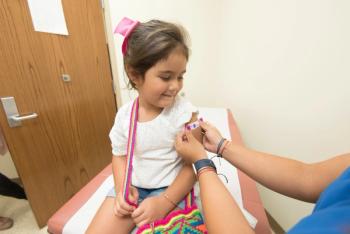
PrEP Initiation is High Among Women in Africa, But Adherence Is Challenging
A recent study of sexually active young women in Africa found that initiation of HIV preexposure prophylaxis (PrEP) was high at 95% and one-fifth showed high adherence at 6 months.
Initiation of preexposure prophylaxis was high among young women at risk for HIV in Africa, but adherence declined over time and with longer time between visits, a recent study found.
The study, published in a research letter in
“Uptake of HIV preexposure prophylaxis (PrEP) was high among a cohort of young South African and Zimbabwean women at risk for HIV, which is encouraging in terms of interest in this novel biomedical HIV prevention method,” Connie Celum, MD, MPH, a professor of global health, medicine and epidemiology and director of the International Clinical Research Center at the University of Washington, told Contagion. “PrEP adherence was moderately high initially but declined with time and as visits were spaced out to quarterly.”
Participants were randomized into two groups: one offering standard adherence support—including counseling, 2-way SMS, and adherence clubs—and an enhanced adherence support group, which included drug level feedback. Those in the enhanced adherence support arm received feedback based on intracellular tenofovir-diphosphate (TFV-DP) levels in dried blood spots (DBS) to try to encourage adherence to treatment.
Celum said the study yielded some surprising results.
“First, STI prevalence was very high (over 1/3 of women having a treatable STI primarily chlamydia and gonorrhea), indicating that more attention needs to be paid to STIs in this population,” she said. “Second, HIV incidence was low (1%) in this population where we would have predicted a several-fold higher HIV incidence; this may indicate that young women benefitted from the package of services that they received. Third, retrospective drug level feedback did not increase adherence compared to a standard package of adherence interventions (two-way SMS, counseling and peer support/adherence clubs) without drug level feedback. Additional research is needed on use of real-time point of care PrEP adherence assays.”
Of the 451 study participants, 39% had curable STIs, 95% started PrEP and 55% had uninterrupted PrEP refills through 12 months. Detectable tenofovir-diphosphate levels were present in 84% at month 3, 57% at month 6, and 31% at month 12. High adherence (TFV-DP ≥700 fmol/punch) was found in 21% of the enhanced arm and 22% of the standard arm at 6 months.
Four women (1%) acquired HIV during the study.
“These data indicate that young African women are motivated to use PrEP but adherence and persistence with daily pill-taking are challenging,” Celum said. “We need to do more to simplify PrEP programs and give women options for long-acting PrEP methods, including the dapivirine vaginal ring and injectable cabotegravir which have shown efficacy.”
The study authors said reasons drug level feedback weren’t associated with increased adherence could have included lag times between when the sample was taken and when counseling was provided. Women also may have doubted reported drug levels or been discouraged from using PrEP if they perceived they were failing the treatment if their levels weren’t what they thought they should be. Also, other measures, such as 2-way SMS and peer support adherence clubs also may have improved adherence enough that benefits of drug level feedback weren’t noticeable.
“It is important to identify what proportion of young African women can adhere to PrEP with simple support such as two-way SMS or WhatsApp support groups, who needs more intensive adherence support, and what adherence support works better for those who need more support,” Celum said. “In addition, it is important to evaluate PrEP delivery and choice of PrEP options as they become available. Lastly, additional long-acting methods could be important for women who want HIV prevention but are not able to take a daily pill. Two novel PrEP agents—a monthly PrEP pill, islatravir, and an every six month SQ injection of an HIV capsid inhibitor, lenacapravir—are currently in efficacy trials.”
Studies have showed that PrEP is effective in maintaining low HIV infection rates, and efforts are ongoing to boost adherence to the treatment.
A
Another r
Newsletter
Stay ahead of emerging infectious disease threats with expert insights and breaking research. Subscribe now to get updates delivered straight to your inbox.
































































































































































































































































































































